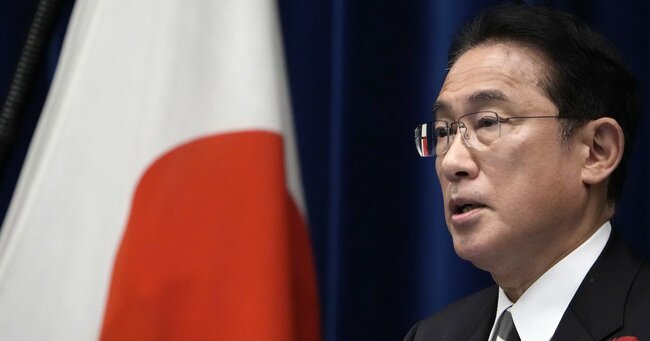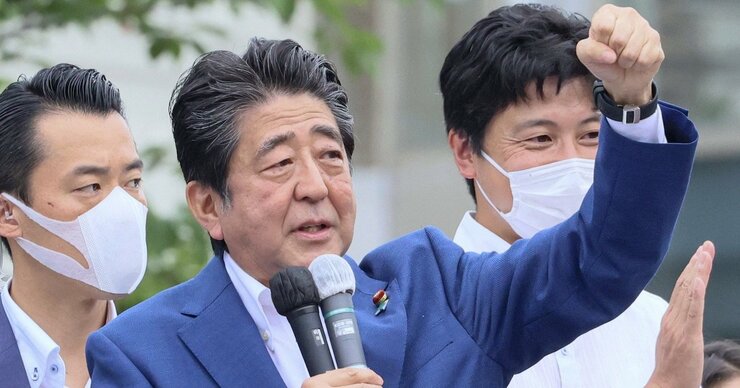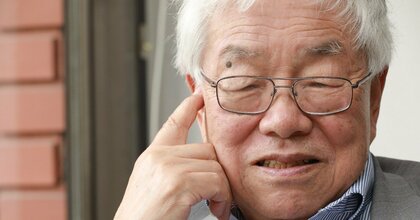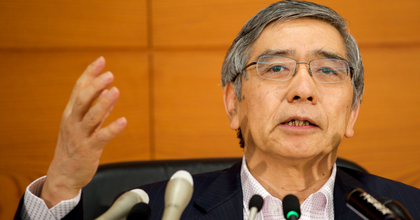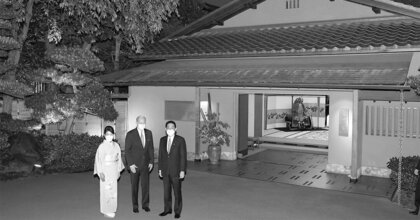A delicate balance undone
To parse the situation, one must first understand the peculiar political conditions Kishida was forced to accept upon coming to power.
Abe had long been a towering presence in Japan’s political circles. Even after the inauguration of the Kishida administration, the former prime minister maintained a great deal of influence over the new premier as the head of the Liberal Democratic Party’s (LDP) largest intraparty faction. The factions are:
Abe Faction (Seiwa Seisaku Kenkyukai): 93 members
Motegi Faction (Heisei Kenkyukai): 54 members
Aso Faction (Shiko-kai): 49 members
Kishida Faction (Kochikai): 44 members
Nikai Faction (Shisuikai): 42 members
Moriyama Faction (Kinmirai Seiji Kenkyukai): 7 members
Unaffiliated: 84 members
The Kishida faction, led by the current prime minister, is only the fourth largest, and it has constantly been pushed about by the Abe faction. Moreover, Abe, an archetypal foreign policy hawk who championed conservatism, was the political opposite of Kishida, a liberal dove.
The influence of Abe and his faction meant that Kishida had to consider Abe’s favored conservative policies and fiscal expansionism in his management of government. But that delicate balance is now broken. From now on, Kishida will find it more difficult to control the conservative Abe faction. Despite his strong victory in the July upper house election, Kishida’s power base is growing increasingly unstable.
The collapse in the balance of power will inevitably affect many areas of policy, but the impact will be particularly keen in the three main parts of Abenomics: fiscal policy, monetary policy, and structural reforms.
First is Japan’s fiscal policy, which is among the world’s worst, judging by levels of public debt. Two bodies within the LDP created in late 2021 have struggled to control the party’s fiscal policy. One, the Headquarters for Fiscal Policy, advocates more proactive public spending. The group counted Abe as its top advisor.
The Headquarters for Promoting Fiscal Consolidation, which calls for getting Japan’s public finances back on track, was created around the same time under the direct control of Kishida, the LDP president. The prime minister rushed to the group’s first meeting. With Abe gone, Kishida is expected to push to narrow Japan’s public deficit gradually.
On top of this, when Abe was the only powerful figure in Japanese politics, the Prime Minister’s Office amassed power at the expense of other government ministries and agencies. This trend was led by bureaucrats close to Abe, most of whom were former officials from the Ministry of Economy, Trade, and Industry. That concentration of power is expected to disperse, and the Ministry of Finance, which also wants to reduce the deficit, may regain some political sway.
Moving forward
There is also considerable interest in the future course of monetary policy, the most striking part of Abenomics.
Although Kishida has taken up the mantle of Abenomics, he is skeptical of monetary easing. He previously noted the adverse effects of negative interest rates in the 2020 LDP leadership election. He upheld the policies of Abenomics to win the support of the Abe faction after he won control of the government and as a measure to shore up stock prices.
Japan is now the only major country to continue large-scale monetary easing, and criticism is growing that it is playing a role in the unfavorable depreciation of the yen and the rising cost of living. Many thus expect Kishida to change course in monetary policy. The key point in this will be the choice of the next governor of the Bank of Japan, who will assume their post in April 2023.
The process of choosing the next governor will pick up from autumn and through the end of the year. Without Abe, the likelihood of a reflationist candidate who favors continued monetary easing has dropped, and monetary policy is expected to gradually be “normalized.”
Both the fiscal and monetary policies favored by Kishida can be considered “correct” from a long-term perspective. However, they will be unpopular with markets in the short-term. Productivity among Japanese companies is low, expectations for economic growth are muted, and normalizing fiscal and monetary policy could hit the broader economy.
To be sure, some negotiation on these tough policies will be needed — a flexible cap on public spending, for example, to help cope with inflation. At the same time, structural reforms leading to viable growth, a feature of Abenomics that had been repeatedly postponed, are still needed.
The Kishida administration conducted a major overhaul of its “new capitalism” initiative, which had been criticized as focusing too much on the distribution of wealth. It retooled new capitalism as focused on investing in growth fields, like startups, the green economy, and digital. The administration said preparations are underway to create a ministerial post overseeing startup support.
Detailed measures for Kishida’s income-doubling plan, the highlight of his new capitalism initiative, will be summarized by the end of 2022. Kishida has emphasized a shift “from savings to investment” that will be accelerated by upgrading Nippon Individual Savings Account (NISA).
But the slogan “from savings to investment” risks triggering capital flight if it is presented poorly. With Japanese stock prices sagging, attractive U.S. stocks that look set to rise could suddenly garner interest in Japan. It would be economically rational for domestic funds to flow out into assets denominated in foreign currencies.
Structural reforms in Japan have long been discussed as a part of aiding small- and medium-sized enterprises struggling to stay competitive, meaning these reforms have lowered the competitiveness of Japanese companies and helped keep some zombie corporations up and running. New reforms must not be based on established political preferences and should be formulated considering the growth prospects of individual industries and companies.
The following has been attributed to Simon Kuznets, who was awarded the Nobel Prize in Economics.
“There are only four types of countries in the world: developed, underdeveloped, Japan, and Argentina.” This means that Japan is the only country to have climbed from underdeveloped to developed, and Argentina is the only one to have descended from developed to underdeveloped.
Argentina is currently suffering from deteriorating public finances, currency depreciation, high living costs and economic stagnation. If the Kishida administration mismanages the “post-Abe” era, Japan too may drop from its position as a developed country.
(Originally written in Japanese by Keisuke Yamaguchi in Weekly Diamond 2022 7/30 issue, translated into English by Erklaren, Inc. and edited by Connor Cislo)

